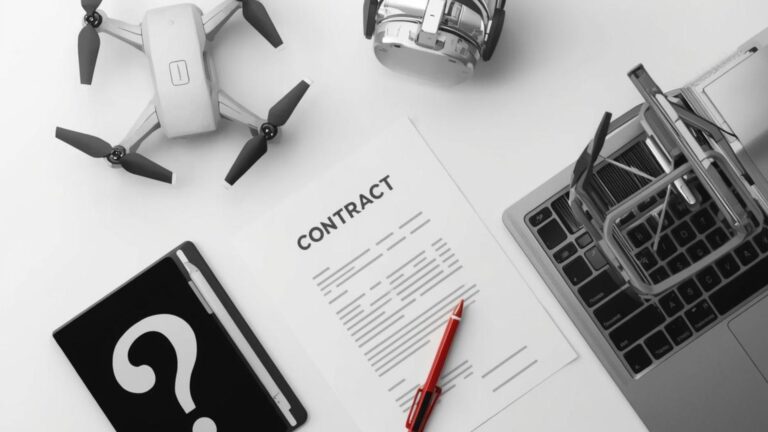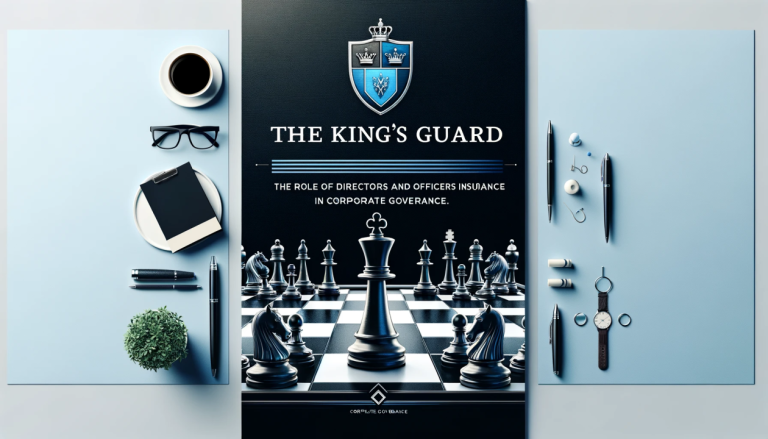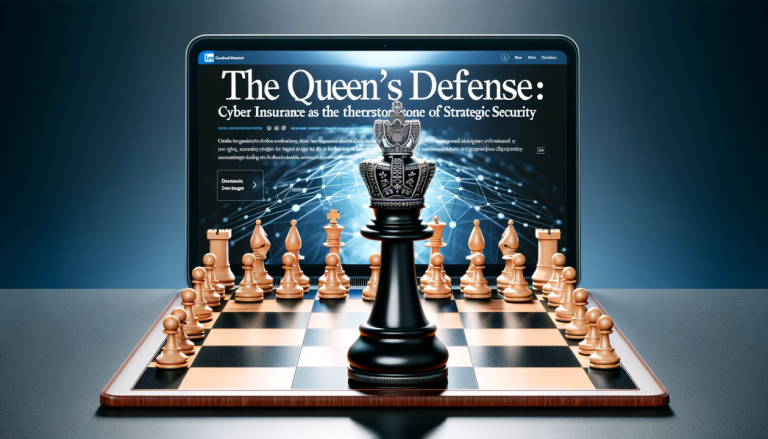Local Newspaper Libel Case
A community newspaper published an investigative article accusing a local business owner of financial improprieties and unethical behavior. The article relied on a single unnamed source and some speculative language. The business owner vehemently denied the allegations and filed a libel lawsuit against the newspaper, claiming the story was false and had damaged his reputation and his business. He sought $1 million in damages for defamation.
Outcome: The lawsuit became a protracted legal battle. The newspaper’s media liability insurance kicked in to cover defense costs – which ran into six figures as the case went through discovery and multiple hearings. Ultimately, it was found that certain claims in the article could not be substantiated, and the newspaper opted to settle the case for around $250,000 and publish a clarification/apology. The insurance policy paid for the settlement as well as all legal fees (apart from the newspaper’s deductible).
Takeaway: Even local or regional publications can face high-dollar lawsuits for libel. A single investigative piece, if not airtight, can trigger a costly claim. Media liability insurance ensures that the paper had the legal resources to defend itself and funds to settle, rather than facing bankruptcy from one contentious story.
Blog Post Triggers Negligent Advice Claim
A small investment advisory firm maintained a blog on its website where it posted market commentary and stock picks. In one post, the firm’s blogger enthusiastically recommended a particular tech stock, citing expected big gains. Several clients (and blog readers) followed this advice. Unfortunately, the stock’s price plunged after some negative news, and those who invested lost significant money. One disgruntled reader – who was not a formal client but relied on the blog – filed a lawsuit against the firm for negligent misrepresentation, alleging that the advice in the blog was given carelessly and caused his financial loss of $50,000.
Outcome: The media liability (E&O) insurer considered this a covered claim (an “errors and omissions” type allegation related to published content). They appointed an attorney to defend the firm. The defense argued that the blog content was general opinion and not personalized financial advice, and also that markets are inherently risky. However, to avoid protracted litigation and additional legal costs, the insurer negotiated a settlement of $30,000 with the claimant. This amount, plus about $20,000 in legal fees up to that point, was paid by the insurance policy. The firm’s deductible was $5,000, which it paid, but the rest came from insurance.
Takeaway: Content that offers advice (financial, medical, legal, etc.) can lead to claims if readers suffer harm by following it. Even if the claims might not ultimately prevail, it costs money to defend. Here, the blog was essentially marketing material for the firm, but it still led to liability. Having insurance allowed the firm to resolve the matter relatively quickly without derailing their business or client relationships.
Trademark Dispute Over a Podcast Name
Two entrepreneurs launched a true-crime podcast that quickly gained a following. They named their podcast with a catchy title that happened to be very similar to the title of a series of true-crime books published years ago by a small press. After the podcast gained popularity, the book publisher sent a trademark infringement cease-and-desist letter, claiming the podcast’s name was creating confusion with their book brand (which was trademarked) and diluting their trademark. The podcasters were threatened with a lawsuit if they didn’t change the name and pay damages for the period of infringement.
Outcome: The podcasters had a media liability insurance policy (through a freelancer business policy) which they notified. The insurer agreed this was a covered IP claim and assigned an intellectual property attorney. The lawyer advised that the publisher’s case had some merit due to the similarity in name and genre, but also that the damages would likely be low since the publisher hadn’t actually lost money. Nonetheless, to avoid litigation costs and potential rebranding PR issues, the insurer helped negotiate a settlement: the podcasters would rebrand the show with a new name, and pay the publisher $10,000 for past usage. The insurance policy covered the legal negotiation and the $10,000 payment. Additionally, the insurer covered costs for the podcasters to run announcements about the name change (as part of the settlement, they agreed to inform listeners to avoid confusion – the policy treated that as a mitigation cost).
Takeaway: Intellectual property claims like trademark infringement can catch content creators by surprise. Often, they’re not intentional – the podcasters weren’t even aware of the books – but that doesn’t eliminate the liability. Media liability policies typically cover unintentional IP violations. In this case, insurance saved the creators from what could have been a much more expensive lawsuit and helped facilitate a smooth transition to a new brand.
Social Media Defamation by an Employee
A medium-sized restaurant chain had a PR crisis when one of its employees, using a personal Twitter account, posted false and damaging tweets about a food poisoning incident. The tweets claimed that the company was covering up a serious outbreak and had ignored health standards. The tweets went viral locally. In reality, there was a single mild food safety issue promptly corrected; the employee’s statements were grossly exaggerated and untrue. The restaurant suspected the employee was disgruntled and fired them. However, the negative publicity caused a notable dip in sales. The company decided to sue the former employee for defamation to set the record straight. Unexpectedly, the former employee counter-sued the company, claiming the restaurant’s public statements about firing them (and labeling them a liar) were defamatory in return.
Outcome: This messy situation led to the company being involved in litigation from both sides. The restaurant’s media liability insurer covered the defense against the counterclaim (the policy doesn’t cover the company’s own suit against the employee, but it does cover the employee’s defamation claim against the company). Legal fees mounted as the case got local news attention. In the end, both parties agreed to drop claims as part of a settlement: no money exchanged hands, but the company issued a statement that the employee had misunderstandings and retracted the harshest wording about the employee’s conduct, and the ex-employee likewise apologized for the inaccurate tweets. The insurance primarily paid for the legal defense – amounting to around $40,000 – helping the company navigate this legal tangle without a direct financial hit beyond their deductible.
Takeaway: In the era of social media, a business might find itself entangled in defamation issues not only with outside parties but even with employees. This example shows how a policy can respond when a company itself is accused of defamation, even in the context of responding to a crisis. It also underscores the importance of careful corporate communication – the company had to sue to correct false info (not covered by insurance), but in doing so it became a defamation defendant too (which was covered). Media liability insurance can cover the company for statements it makes in self-defense or PR management that inadvertently spark a claim.
Influencer’s Video Results in a Lawsuit
A YouTube influencer with a large following made a video reviewing a new gadget. In the video, the influencer demonstrably used the gadget in unintended ways, pushing it beyond its specifications, and the device malfunctioned. The influencer jokingly claimed the gadget was “a piece of junk that will fall apart if you actually use it.” The video went viral, and the gadget’s manufacturer saw a noticeable uptick in product returns and a drop in sales, which they attributed to the negative review. The manufacturer then sued the influencer for product disparagement and defamation, arguing that the influencer’s claims about the product were false and had caused the company financial harm.
Outcome: The influencer had a media liability endorsement on a business policy (many professional influencers do). The insurer provided a defense, bringing in attorneys familiar with First Amendment and advertising law. They argued the influencer’s statements were opinion and hyperbole, protected as free speech, and that the product was indeed used strenuously but fairly in the review. After some legal back-and-forth, the case settled with the influencer agreeing to post a clarification in the video description (noting the device is safe when used as directed), but no monetary damages paid. However, legal costs for the defense were around $75,000, which the insurance fully covered (after the influencer’s deductible). The influencer was relieved, as independently fighting a corporate lawsuit could have ruined them financially.
Takeaway: This showcases how media liability insurance protects individual content creators. Manufacturers and businesses sometimes take legal action against reviewers or social media figures if they believe a review is not just negative but factually incorrect and harming their bottom line. Whether or not the claimant could have won, the threat alone means an influencer needs to mount a defense. Insurance provided the means to do so, recognizing that reviews and opinions (even if exaggerated for entertainment) can spark serious legal claims. Without coverage, many influencers might feel pressure to retract truthful opinions simply because they can’t afford a legal fight.
Privacy Breach by a Publication
A lifestyle website published an article about a well-known local family, focusing on their home’s design and security features, as part of a “celebrity homes” series. The piece included detailed descriptions of the home layout, security camera placements, and even photographs taken from outside (publicly accessible vantage points). The family had not been interviewed for the piece and did not consent to the coverage. They felt this story put their safety at risk by effectively mapping out their security, and it intruded on their private life (describing interior elements visible through windows, etc.). The family sued the publication for invasion of privacy, specifically under the claims of giving unwanted publicity to private facts and portraying them in a false light (the article implied they were overly paranoid about security, which they found embarrassing and untrue).
Outcome: The publication’s media liability insurer took on the case. Privacy claims can be tricky – the defense argued that any photographs were taken from public property and the information was newsworthy (given the family’s local prominence). However, the family argued some details were not publicly known and purely private. To avoid extensive litigation and potential jury sympathy for the family, a mediation was held. The case settled with the website agreeing to take down the article and to pay the family $20,000 for the distress caused. The insurance policy covered that settlement and roughly $30,000 in legal fees accumulated. Additionally, the insurer and publisher reviewed the editorial process to prevent future privacy intrusions – an example of how insurers sometimes provide risk management guidance after a claim.
Takeaway: Privacy claims are a significant part of media liability. Even if content is gathered legally, individuals may pursue claims if they feel their privacy was violated by publication. Media liability insurance covers various privacy torts – public disclosure of private facts, intrusion into seclusion, portrayal in false light, etc. This scenario emphasizes caution when publishing personal details about private individuals, and it shows that insurance will step in to mitigate the fallout if a line is crossed, whether inadvertently or in the grey area of newsworthiness.
Copyright Infringement in a Marketing Campaign
A small retail company decided to create a catchy jingle for a series of online video ads. The marketing manager, to save money, took a popular hit song, changed a few lyrics to make it about their store, and used it as the background music in the ads. The videos were posted on YouTube and social media. They quickly got attention – including from the music publisher who owned rights to the original song. The publisher sent a cease-and-desist letter and a demand for damages for willful copyright infringement, since the tune was clearly recognizable and no license had been obtained. They threatened a lawsuit that could seek statutory damages which, in cases of willful infringement, can be very high (potentially up to $150,000 per infringed work, plus attorney fees).
Outcome: The retail company immediately notified their insurer. Media liability policies cover copyright infringement in advertising as well (often called “advertising injury” coverage, which good media policies include broadly). The insurer brought in an IP lawyer who quickly advised to cease using the song. The case was settled out of court: the company agreed to pay $25,000 in damages (reflecting what a license might have cost plus a penalty) and to pull down the offending ads. The insurance covered the settlement and about $10,000 in legal costs related to negotiations. The retailer learned a valuable lesson and subsequently made sure to use properly licensed music. The insurer, having paid a claim for a somewhat knowing infringement, did raise the premium slightly at renewal but did not drop coverage (since the company showed good faith in resolving it and improving practices).
Takeaway: This highlights how even a “borrowed” piece of content like a song can lead to a claim. Many businesses may not realize the severity of using copyrighted material without permission, especially in advertising. Media liability insurance covers these mistakes – though note, if an infringement is truly willful, some policies might have exclusions. In many cases, however, insurers treat it as covered as long as it’s resolved. The story underscores the importance of securing rights and the safety net insurance provides when such oversights occur.
Conclusion: Lessons from Claims Examples
Across these examples – libel, negligence, trademark, social media defamation, product disparagement, privacy, and copyright claims – a common theme emerges: media liability insurance is crucial in managing the risk of creating and sharing content. Each scenario shows how an everyday action in the media or marketing world (publishing an article, writing a blog, posting on social media, reviewing a product, covering someone’s personal life, using media assets) can escalate to a legal dispute.
In each case, having the right insurance meant:
- Expert Legal Defense: The insured party had skilled lawyers defend or advise them, funded by the insurer. This leveled the playing field, whether they faced a lawsuit from a powerful company or an individual with a grievance.
- Financial Protection: Settlements and judgments, as well as hefty legal bills, were paid by the insurance policy (after the deductible), sparing the insured from major financial harm. For a small business or individual, this can mean avoiding bankruptcy; for a larger one, it protects the bottom line and allows continuity of operations.
- Flexibility in Resolution: With insurance support, the insured could choose the best course – fighting a claim to vindication or settling to cut losses – without the decision being solely driven by lack of funds. The insurer and insured often work together to decide when to settle vs. litigate, considering both principle and economic sense.
- Risk Management Improvement: Many of these examples ended with the insured improving their content practices (fact-checking more, licensing content properly, implementing social media policies, etc.). Insurance not only solves problems after the fact but often encourages better risk management to prevent future claims. Some insurers even provide risk mitigation resources to their media insureds – like pre-publication review hotlines or contract review services.
Media liability claims examples teach content creators a clear message: no matter how careful you are, mistakes or conflicts can happen. You might publish something you believe is correct and fair, yet someone may feel wronged and take legal action. Or you might inadvertently use someone else’s material or overstep privacy bounds. The difference between a crisis that sinks you and one you weather is often having the right insurance safety net.
By studying these scenarios, media professionals and businesses can also learn how to avoid or minimize risks:
- Thoroughly verify information and sources to prevent libel.
- Add disclaimers or clarify the scope of advice to avoid misleading readers.
- Conduct trademark searches and clear titles/brands before launch.
- Train employees on responsible social media use and have a review process for official communications.
- Stay within fair use or obtain licenses for any content (music, images, text) you didn’t create.
- Respect individuals’ privacy and obtain consent or blur identifying details for sensitive stories.
- Use truth as a defense but also be mindful of tone (clear opinions vs. factual assertions).
- When in doubt, consult legal counsel before publishing contentious content – it’s often cheaper to prevent a claim than to fight one.
Each example ended relatively well because the insured had coverage. Without media liability insurance, any one of these could have had a much harsher outcome financially – potentially forcing a business to close or an individual into debt, regardless of the merits of the case.

























































































































